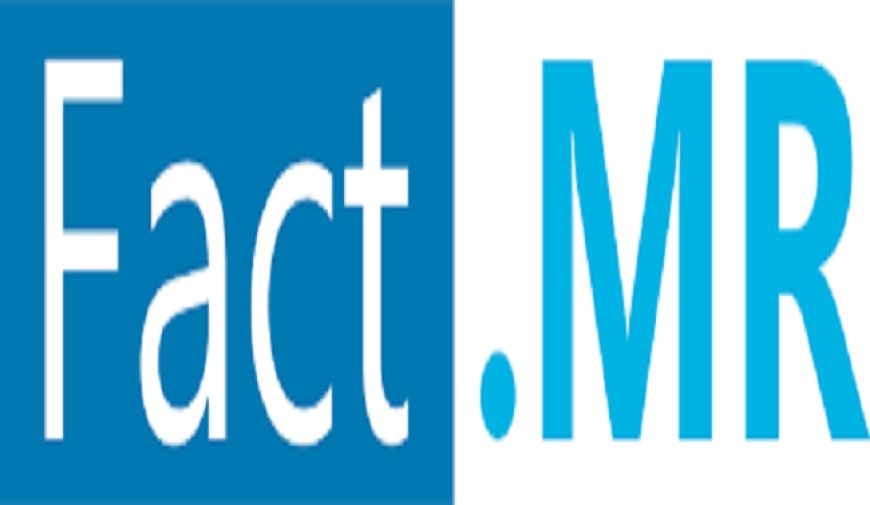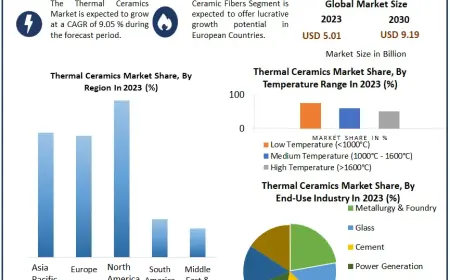Polymer Binders Market Future Scope Competitive Analysis & Revenue by Fact MR
The global polymer binders market was valued at US$ 44 billion in 2023 and is projected to grow at a compound annual growth rate (CAGR) of 9%, reaching an estimated US$ 105 billion by the end of 2033.

The global polymer binders market was valued at US$ 44 billion in 2023 and is projected to grow at a compound annual growth rate (CAGR) of 9%, reaching an estimated US$ 105 billion by the end of 2033.
The polymer binders market has grown to become an essential part of several industries including construction, paints and coatings, adhesives, textiles, and automotive. Polymer binders act as a crucial component that holds together pigments and other solids in formulations, giving the product desirable mechanical, chemical, and physical properties. These binders are primarily used to enhance adhesion, flexibility, and water resistance in end-use applications. Depending on the application, polymer binders can be acrylic, styrene-butadiene, vinyl acetate, or polyurethane-based, among others. The shift towards eco-friendly and low-VOC (volatile organic compound) formulations has significantly influenced the market landscape, encouraging the development of water-based and bio-based alternatives. With growing industrialization and infrastructure development across both developed and developing economies, the demand for high-performance binders continues to rise steadily.
Get Free Sample Copy of This Report-https://www.factmr.com/connectus/sample?flag=S&rep_id=8234
Future Outlook
The future of the polymer binders market looks promising, with expectations of widespread adoption in new and emerging applications. Advancements in green chemistry and the rising importance of sustainability in product development are likely to shape the future of binder technologies. There is growing interest in biodegradable and recyclable binders, particularly from industries aiming to reduce their environmental footprint. In addition, the market is likely to benefit from increasing investments in smart coatings and functional textiles, where specialized binders are used to deliver unique properties such as self-healing, antimicrobial, or flame-retardant characteristics. The construction sector, driven by urban expansion and modernization efforts, is expected to remain a major consumer of polymer binders. With rising demand from Asia-Pacific and Middle Eastern regions, the global footprint of this market is set to expand significantly over the coming years.
Market Demand
The demand for polymer binders is largely driven by the need for advanced materials with enhanced durability, adhesion, and resistance to environmental stress. In the construction industry, polymer binders are extensively used in cement, mortars, and insulation materials to improve flexibility, reduce cracking, and enhance moisture resistance. The paint and coatings industry also contributes significantly to demand, relying on binders for pigment dispersion, film formation, and improved finish. As trends move towards low-emission paints and sustainable formulations, the need for binders that are VOC-compliant is becoming more urgent. Furthermore, demand is also rising in the packaging and paper industry where polymer binders are used in barrier coatings and lamination applications. With end-use industries growing in scale and sophistication, the need for tailor-made binder solutions is expected to remain high.
List of Key Companies Profiled in The Report
- Arkema
- Wacker Chemie AG
- BAEF SE
- Trinseo
- Celanese Corporation
- Synthomer PLC
- Dairen Chemical Corporation
- OMNOVA Solutions Inc.
- Others
Recent Industry News
Recent developments in the polymer binders market reflect the industry’s dynamic nature and response to global challenges. Several companies have launched eco-friendly binder ranges to align with stricter environmental regulations and consumer preferences. Investments in production capacity expansion, especially in Asia-Pacific regions, have been making headlines, driven by surging regional demand. Additionally, the market has seen increased partnerships and joint ventures between global manufacturers and local distributors to ensure better supply chain efficiency and customer outreach. Technological advancements in binder chemistry, such as the use of nanotechnology to enhance mechanical properties, have also been highlighted in recent trade fairs and conferences. These trends suggest a market that is not only growing but also adapting quickly to both environmental needs and end-user expectations.
Notable Developments
Among the notable developments, several players have introduced next-generation binders featuring improved eco-efficiency, better performance under extreme conditions, and higher versatility across applications. Innovations such as hybrid polymer binders that combine the strengths of different chemistries are becoming more common. Some manufacturers have announced the successful commercialization of bio-based binders that match the performance of traditional variants, signaling a major shift toward sustainable chemistry. The rise of digitalization in manufacturing and quality control has also impacted the binder production process, allowing for real-time monitoring and enhanced product consistency. Furthermore, companies are increasingly focusing on lifecycle analysis and carbon footprint assessment of their binder products, underscoring a commitment to circular economy principles. As such, these developments are shaping the polymer binders market into a more resilient and forward-thinking industry.
Competitive Landscape
Key players in the polymer binders market are actively forming strategic partnerships to unlock new growth avenues and strengthen their market presence.
For example, in February 2019, Adani Group and BASF signed a Memorandum of Understanding (MoU) during the Vibrant Gujarat Global Summit. The agreement focuses on exploring a significant investment across the acrylics value chain. This initiative is regarded as BASF’s largest planned investment in India to date, highlighting the company's commitment to expanding its footprint in the region.
What's Your Reaction?
 Like
0
Like
0
 Dislike
0
Dislike
0
 Love
0
Love
0
 Funny
0
Funny
0
 Angry
0
Angry
0
 Sad
0
Sad
0
 Wow
0
Wow
0













































